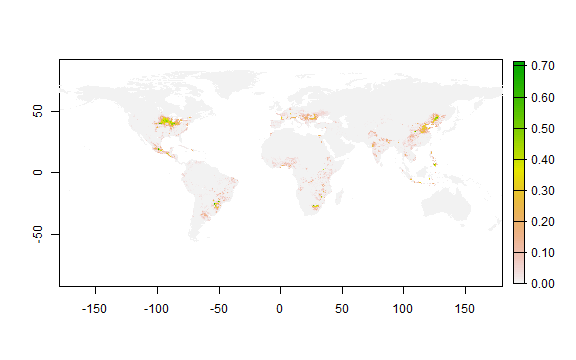Data bases¶
Introduction¶
Chapter requirements¶
We use R package agrodata. See these
installation instructions.
Sacks data¶
There are data for 20 crops, some are divided into two groups (winter / spring) or (main / 2nd season).
library(agrodata)
agrodata::crop_calendar_sacks()
## Choose one of:
## [1] "Barley (winter)" "Barley (spring)" "Cassava"
## [4] "Cotton" "Groundnut" "Maize (main season)"
## [7] "Maize (2nd season)" "Millet" "Oat (winter)"
## [10] "Oat (spring)" "Potato" "Pulses"
## [13] "Rapeseed" "Rice (main season)" "Rice (2nd season)"
## [16] "Rye" "Sorghum (main season)" "Sorghum (2nd season)"
## [19] "soybean" "sugarbeet" "Sunflower"
## [22] "Sweetpotato" "Wheat (winter)" "Wheat (spring)"
## [25] "Yam"
We choose “Maize (main season)”
r <- agrodata::crop_calendar_sacks("Maize (main season)")
r
## class : SpatRaster
## dimensions : 2160, 4320, 13 (nrow, ncol, nlyr)
## resolution : 0.08333333, 0.08333334 (x, y)
## extent : -180, 180, -90, 90 (xmin, xmax, ymin, ymax)
## coord. ref. :
## data sources: NETCDF:"./Maize.crop.calendar.nc":harvest
## NETCDF:"./Maize.crop.calendar.nc":harvest.end
## NETCDF:"./Maize.crop.calendar.nc":harvest.range
## NETCDF:"./Maize.crop.calendar.nc":harvest.start
## NETCDF:"./Maize.crop.calendar.nc":harvested.area
## ... and 8 more sources
## names : harvest, harvest.end, harvest.range, harvest.start, harvested.area, ...
Note that there are 13 variables in this dataset for each crop.
names(r)
## [1] "harvest" "harvest.end"
## [3] "harvest.range" "harvest.start"
## [5] "harvested.area" "harvested.area.fraction"
## [7] "index" "plant"
## [9] "plant.end" "plant.range"
## [11] "plant.start" "political.level"
## [13] "tot.days"
The mean day of harvest
plot(r[["harvest"]])
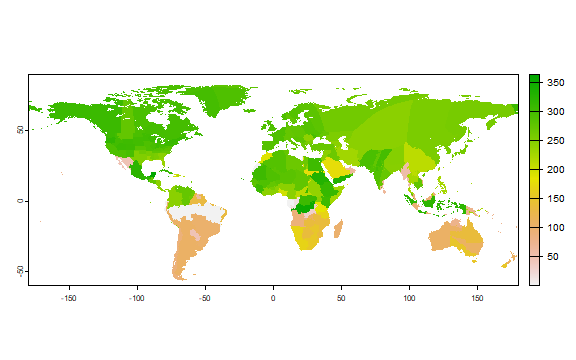
But harvesting is not all done on one day. It is estimated to start on this day:
plot(r["harvest.start"])
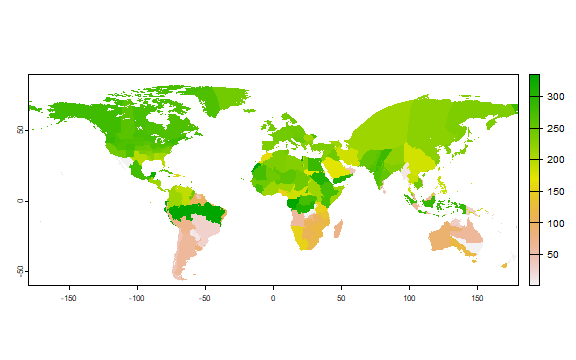 And end on
And end on
plot(r["harvest.end"])
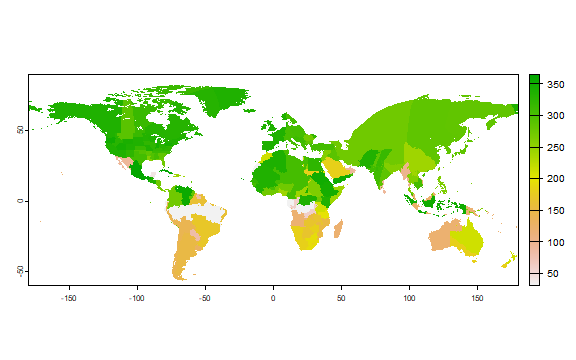
“harvest.range” is the difference between “harvest.start” and “harvest.end”
The “harvest.*” variables are also avaiable for planting.
plot(r["harvest.end"])
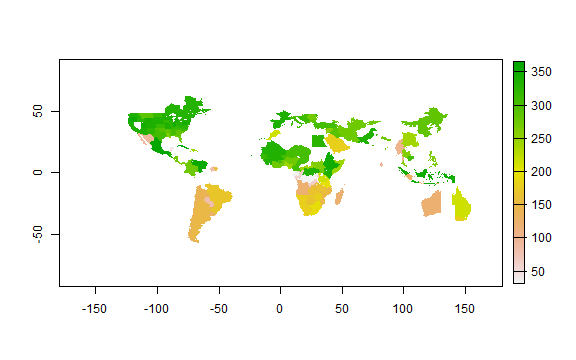
“tot.days” is the number of days between planting and harvest.
plot(r["tot.days"])
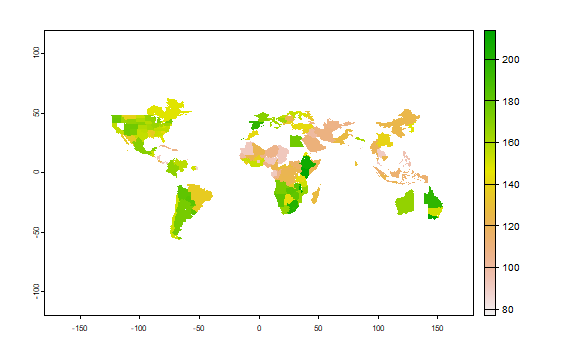
“harvested.area” has the crop area in ha, and “harvested.area.fraction” has it as a fraction of the grid cell.
plot(r["harvested.area.fraction"])
